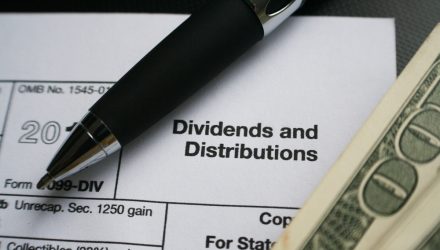As highlighted by the performances of broader equity benchmarks such as the S&P 500, 2022 will go down as a forgettable year for equities. However, there are some bright spots. High-dividend stocks and the related exchange traded funds are among those sources of positivity. Just look at the WisdomTree U.S. High Dividend Fund (DHS). As its name implies, the $1.34 billion DHS focuses on high-yielding dividend equities.
That strategy is paying, well, dividends in 2022’s volatile market environment. While the S&P 500 is saddled with a year-to-date loss as of November 8, DHS is sporting a 7.2% gain on the year. Over the past 12 months, the WisdomTree ETF is up 11.4% while the S&P 500 is lower by 17.3%.
“DHS considers momentum when selecting constituents. It uses a risk factor score to screen the dividend-paying universe for high-quality stocks with positive momentum. Stocks that make the cut are weighted by their projected cash dividend over the next year, which should help to maximize yield despite a relatively broad holdings list of 311 stocks,” noted Morningstar analyst Zachary Evens.
A primary advantage offered by dividend ETFs, beyond the obvious income, is reduced volatility. That trait is taking on added meaning this year.
“Dividend funds have provided some degree of sanctuary during the recent tumult, broadening their appeal beyond just income investors,” added Evens. “For the year to date through September 2022, dividend exchange-traded funds have brought in an estimated $55 billion—a time when other ETFs and mutual funds have hemorrhaged assets. Investors in dividend ETFs have not been rewarded in the profit/loss column though, with the average fund down more than 19% through September.”
This year, DHS is holding up its end of the reduced volatility bargain. DHS’s annualized volatility to this point in the year is nearly 700 basis points below that of the S&P 500. That’s old hat for the WisdomTree ETF because for the six years ending 2021, DHS was less volatile than the S&P 500 on an annualized basis five times, with 2020 being the outlier.
Interestingly, DHS’s favorable volatility traits arrive with energy being the ETF’s largest sector weight at 22.93%. Some of the potential turbulence associated with that sector is offset by a 37% combined allocation to lower beta healthcare and consumer staples stocks.
DHS, which debuted in mid-2016, sports a distribution yield of 2.74% and pays a monthly dividend.
For more news, information, and strategy, visit the Modern Alpha Channel.
The opinions and forecasts expressed herein are solely those of Tom Lydon, and may not actually come to pass. Information on this site should not be used or construed as an offer to sell, a solicitation of an offer to buy, or a recommendation for any product.








